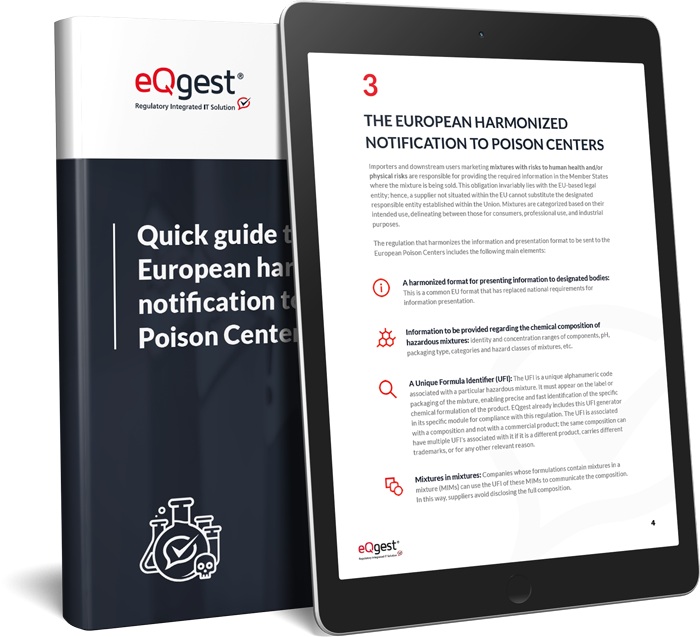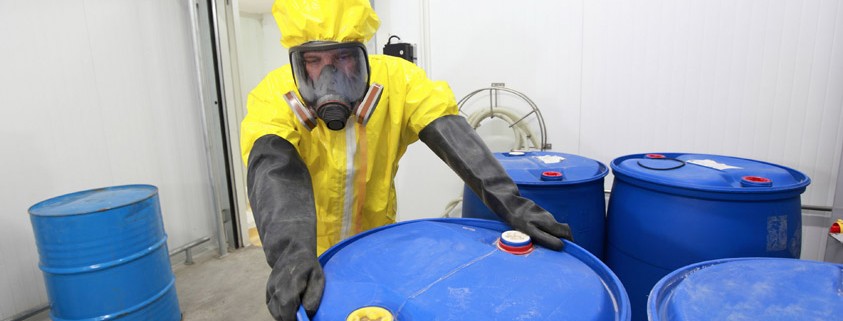The publication of ABNT NBR 14725 2023 marks a significant milestone in the regulation of hazard communication for chemical products in Brazil. This new version introduces relevant changes in the organization, terminology, and content of Safety Data Sheets (SDS), formerly known as FISPQ (Ficha de Informação de Segurança de Produtos Químicos).
As a result of an extensive review process, the new standard was published on July 3, 2023, representing the broadest and most significant update since 2009.
The update cancels and replaces ABNT NBR 14725-1:2009, ABNT NBR 14725-2:2019, ABNT NBR 14725-3:2017, and ABNT NBR 14725-4:2014, consolidating all guidelines into a single document.
This document consists of 7 sections, 17 annexes, totaling 542 pages, and is aligned with the 7th edition of the UN Globally Harmonized System (GHS) Purple Book.
From the date of publication, a 24-month transition period was established—until July 3, 2025—during which organizations must review and update their sheets, converting FISPQs into SDSs according to the new requirements.
In this article, you will find a summary of the main points of the new standard, its differences from the previous version, who must apply it, practical guidance for compliance, risks of non-compliance, and frequently asked questions. Check it out!
What is ABNT NBR 14725 2023?
ABNT NBR 14725 2023 is the Brazilian technical standard that sets the criteria for hazard classification, preventive labeling, and the preparation of Safety Data Sheets (SDS) for chemical substances and mixtures.
Its main objective is to ensure clear, standardized, and effective communication of chemical hazards, promoting protection of worker and consumer health as well as environmental safety.
ABNT NBR 14725:2023 is aligned with the 7th edition of the Purple Book, the UN reference document for the Globally Harmonized System of Classification and Labeling of Chemicals (GHS).
This international alignment contributes to more uniform hazard communication, facilitates international trade, and strengthens compliance with national regulations, such as Brazil’s NR-26, which deals with workplace safety signage.
8 major changes introduced by ABNT NBR 14725:2023
1. Unified structure and alignment with international standards
One of the most relevant structural changes in the new ABNT NBR 14725 is the consolidation of the standard: previously divided into four parts (Part 1: Terminology, Part 2: Classification, Part 3: Labeling, and Part 4: FISPQ sheet), the new version now comes as a single document, making it easier to consult and apply.
Another relevant point is alignment and updating with international standards. The standard now adopts the 7th edition of the Purple Book, while the previous version was based on the 4th edition.
2. From FISPQ to SDS
The term FISPQ (Ficha de Informação de Segurança de Produtos Químicos) has been replaced with SDS (Ficha de Dados de Segurança), aligning with international terminology—Safety Data Sheet in English.
This change reflects a global standardization effort and improves clarity in hazard communication. Criteria for preparing SDSs have been revised to align with GHS.
3. Physical Hazards – Flammable Gases: Hazard Class Subdivision
The new standard introduces a subdivision in the classification of flammable gases, providing more precise risk evaluation. The old “Flammable Gas Category 1” is now divided into the following subcategories:
Flammable Gas 1A
Flammable Gas 1B
Flammable Gas 2
This division allows for a clearer distinction between different hazard levels. Additionally, gases with pyrophoric or chemically unstable properties are automatically classified as Flammable Gas 1A, reflecting stricter safety criteria.
Desensitized Explosives
Classification is now based on Corrected Burning Rate (Ac), according to UN Test Methods and Criteria. Desensitized explosives are divided into four categories:
Category 1: Ac ≥ 300 kg/min and ≤ 1200 kg/min
Category 2: Ac ≥ 140 kg/min and ≤ 300 kg/min
Category 3: Ac ≥ 60 kg/min and ≤ 140 kg/min
Category 4: Ac < 60 kg/min
This innovation enables more accurate risk evaluation of materials previously considered outside conventional explosive classifications.
4. Human Health Hazard Classification
The new version of ABNT NBR 14725:2023 introduces important updates to toxicological classifications, with more detailed criteria and a strengthened requirement for using cut-off values and concentration limits for chemical mixture classification.
Previously considered guidance in Part 2 of the 2019 version, these values are now mandatory, making the classification process more rigorous and standardized.
Key changes include:
Reproductive Toxicity: Class name updated from “Reproductive and Lactation Toxicity” to “Reproductive Toxicity,” aligning with GHS.
Skin Corrosion/Irritation: Category 1 is now formally included as a general category when precise subcategories 1A, 1B, or 1C cannot be determined. Category 2 (skin irritant) and Category 3 (mild skin irritant) are also included.
Serious Eye Damage/Eye Irritation: Category 2 is now explicitly recognized and subdivided into:
2/2A – Eye Irritation
2B – Moderate Reversible Eye Irritation
Category 1 remains unchanged.
Respiratory or Skin Sensitization: Previously, the standard recommended consulting the Purple Book. With the update, subcategories 1, 1A, and 1B have been incorporated, with specific criteria to differentiate sensitization levels per GHS.
Acute Toxicity (Category 4 for Gases): Acute Toxicity Estimate (ATE) values for Category 4 Gases have been updated:
Before: ATE ≤ 5,000
Now: ATE between 2,500 and 20,000 (2,500 < ATE ≤ 20,000).
5. Environmental Hazard Classification – Aquatic Hazard (Ecotoxicology)
ABNT NBR 14725:2023 introduced major advances in environmental hazard classification, with more detailed criteria for evaluating ecotoxicological impacts.
The classification criteria for acute and chronic aquatic hazards were reviewed and improved, providing greater precision in assessing the toxic potential of substances and mixtures on aquatic organisms.
The standard specifies technical parameters and cut-off values to be used, in harmony with the 7th edition of the Purple Book.
Ozone Depletion Hazard
A significant addition is the introduction of an Ozone Depletion Hazard category, previously absent from the Brazilian standard.
This new class includes substances and mixtures that contain any component listed in the Montreal Protocol Annexes at a concentration equal to or greater than 0.1%. Among notable compounds is CFC-11 (chlorofluorocarbon‑11), known for its high ozone-depleting potential.
This inclusion reinforces Brazil’s alignment with international environmental agreements and demonstrates commitment to preserving the ozone layer and public health.
6. Hazard Communication: Labeling
The standard also introduced significant changes to the labeling of chemical products, highlighting specific rules applicable to small containers and products not classified as hazardous.
Labeling of NON-Hazardous Products
The new standard establishes that labels for products not classified as hazardous must include:
Product identification
Supplier identification
One of the following mandatory statements:
“Not classified as hazardous according to ABNT NBR 14725”; or
“Not classified as hazardous according to the UN GHS”.
This requirement aims to ensure traceability and clear communication, even for products without a hazard classification.
Labeling of Hazardous Products
The standard updated the mandatory label elements and reorganized some requirements. The most relevant changes are:
a) Product identification – unchanged.
b) Supplier identification – unchanged.
c) Chemical identity – now mandatory only for products hazardous to human health.
d) Hazard pictograms – unchanged.
e) Signal word – “Danger” and “Warning” are maintained; the word “Caution” was removed.
f) Hazard statements (H) – updated, with additions, modifications, and combinations.
g) Precautionary statements (P) – also updated, with new inclusions and wording adjustments.
h) Supplementary information – the mention of the SDS is now optional: it must state that the SDS “may” be obtained, replacing the previous mandatory nature.
Important: Although the chemical identity on the label (item “c”) is only required for health hazards, the SDS must include all substances or mixtures hazardous to human health and the environment.
Labeling of Small Containers
The standard includes specific rules for labeling containers with a capacity equal to or less than 250 mL, differentiating cases based on the container’s purpose.
a) Containers intended for commercialization or external supply
Minimum mandatory labeling on the bottle:
Product identification.
Supplier name and emergency phone number.
Other label elements:
May be provided by alternative means such as:
Printed instructions.
Informational leaflets.
Tag-type labels.
Package inserts, etc.
b) Containers intended for internal use (not for commercialization)
For products used internally within a company (without external supply), alternative communication methods are allowed, such as:
Summary documents.
Visual flow diagrams.
Electronic media, etc.
7. Update of H and P Statements
ABNT NBR 14725:2023 incorporated updates from the 7th revision of the GHS, promoting a comprehensive review of hazard (H) and precautionary (P) statements.
The changes include text modifications, the inclusion of new statements, combination of statements (attached phrases), and removal of obsolete ones.
The updates are described in Annexes C, D, and E of the standard.
8. Hazard Communication: SDS
The new version of the standard replaced the term FISPQ with SDS – Safety Data Sheet, aligning with international nomenclature.
The SDS structure remains with 16 mandatory sections, but with relevant adjustments in Sections 3 and 9:
Section 3: Composition and Information on Ingredients
The standard reinforces the obligation to report, both for pure substances and mixtures, the following data for all ingredients hazardous to human health or the environment:
Name or chemical identity.
CAS number (Chemical Abstracts Service).
Exact concentration or concentration range.
These data must be provided when the ingredient is present above its respective cut-off values or concentration limits, as established in items 5.3 and 5.4 of the standard.
Section 9: Physical and Chemical Properties
A new mandatory property was added for solid products:
Particle characteristics – applicable to substances or mixtures in a solid physical state, to improve risk assessment related to particle inhalation or reactivity.
What your company needs to know and do
The implementation of ABNT NBR 14725:2023 has direct impacts on companies that manufacture, import, market, or use chemical products.
More than just a regulatory update, this represents a strategic change requiring attention to various technical, legal, and operational aspects.
In this section, we cover the main points that organizations must consider to ensure an efficient, safe, and legally compliant transition — from identifying who must comply, to the stages of adaptation, risks of non-compliance, and practical actions that should begin immediately.
Who Needs to Comply with the New Standard?
ABNT NBR 14725:2023 is mandatory for a wide range of sectors working with chemical products.
Manufacturers, importers, distributors, and users are responsible for ensuring that their Safety Data Sheets (SDS) are updated and fully compliant with the new requirements.
The requirement directly affects industries such as chemical, cosmetics, sanitizing products, paints, agrochemicals, as well as companies involved in the transport and logistics of hazardous goods.
The responsibility for preparing and reviewing SDSs falls mainly on manufacturers, importers, and distributors, who must ensure that the information is accurate, complete, and readily accessible to everyone involved in the handling, storage, and use of chemical products.
How to Adapt Your Company to NBR 14725:2023?
Compliance with the new standard requires strategic planning and structured execution. The first step is to conduct a comprehensive diagnosis of existing FISPQs, identifying which documents need to be updated to the new Safety Data Sheet (SDS) format, according to the criteria established by ABNT NBR 14725:2023.
Next, the new SDSs must be reviewed and prepared, ensuring that all information is accurate and complies with the updated standard.
The product labeling must also be updated, including the new pictograms, signal words, and required hazard and precautionary statements. Another essential aspect is team training. All employees involved in the handling, storage, transport, and marketing of chemical products must be trained to correctly interpret and apply the information contained in the SDS.
To streamline this process, it is recommended to use specialized software for SDS management and generation, preferably with technical support from chemical regulation experts, ensuring precision and regulatory compliance.
From July 4, 2025, the deadline for compliance, the old FISPQs will no longer be legally or regulatorily valid.
Consequences of Non-Compliance
Failing to comply with ABNT NBR 14725:2023 can lead to serious consequences for companies. The main risks include:
Fines and legal penalties: Non-compliance may result in administrative, civil, and even criminal penalties, in accordance with Brazilian legislation and the inspection regulations of the Ministry of Labor, IBAMA, and other competent authorities.
Supply chain disruptions: Business partners, customers, and international importers may require compliance with the standard as a condition for purchasing, exporting, or distributing products.
Reputational damage: Lack of compliance can affect the company’s credibility and institutional image in the eyes of the market, investors, and the public.
Health and safety risks: Incomplete or incorrect information in SDSs can jeopardize the safety of workers, the environment, and end consumers.
What Should Your Company Do Now?
As we’ve seen, updating to ABNT NBR 14725:2023 goes far beyond a legal requirement: it is a strategic opportunity to strengthen your company’s chemical safety culture, environmental and social responsibility, and regulatory compliance.
To comply properly, it is essential to immediately begin the following actions:
Review and update all Safety Data Sheets (SDS) in accordance with the new criteria established.
Review chemical product labels, including pictograms, hazard statements, and precautionary statements.
Train teams handling chemical products, ensuring they correctly understand and apply the information in SDSs and labels.
Evaluate and update internal procedures for safety, transport, and storage.
Seek specialized technical support, either through regulatory consulting or via specialized software with qualified technical support in chemical regulations.
Plan the transition with a clear timeline and priorities, especially for higher-volume or higher-risk products.
Complying with the new standard not only avoids penalties, but also helps maintain the company’s credibility, ensure good safety practices, and preserve competitiveness in both national and international markets.
Frequently Asked Questions about ABNT NBR 14725:2023
When does the new NBR 14725 come into effect?
ABNT NBR 14725:2023 was published on July 3, 2023. The deadline for compliance is July 4, 2025, after which compliance becomes mandatory.Does the standard replace the previous version?
Yes. The new standard fully replaces the earlier versions of ABNT NBR 14725, which were previously divided into four parts. Now, all requirements are consolidated into a single document, making it easier to consult and implement.What is the SDS?
The SDS (Safety Data Sheet) is a standardized technical document containing essential information about the hazards of a chemical substance or mixture.
It includes instructions on safe storage, handling, transport, occupational exposure, emergency measures, and final disposal.
The SDS officially replaces the FISPQ, aligning with international terminology: SDS in English and FDS (Ficha de Datos de Seguridad) in Spanish, promoting clearer and more effective global communication about chemical safety.Is the old FISPQ still valid?
FISPQs prepared under the previous version of the standard remain valid until July 4, 2025. After this date, only SDSs in the new format will have legal and regulatory validity.Who is responsible for preparing the SDS?
The responsibility for preparing the SDS lies with the manufacturer, importer, or distributor of the chemical product. It is crucial to ensure that all information is accurate, up-to-date, and compliant with the new standard’s criteria.Does the standard apply to household products?
Yes, if they contain chemical substances classified as hazardous. An SDS must be prepared whenever there is a risk to human health, the environment, or worker safety.Can I keep the SDS only in digital format?
Yes. The SDS can be stored digitally, as long as it is immediately accessible to all workers exposed to or handling or transporting the chemical product.Does the new standard require changes in product labeling?
Yes. Labels must be updated according to the new classification criteria, including pictograms, signal words, and hazard (H) and precautionary (P) statements established in the 7th edition of the GHS.How can I prove that my company complies with NBR 14725?
To demonstrate compliance with NBR 14725, it is essential to:
Keep all SDS records up to date
Train staff
Review and update product labeling
Ideally, rely on specialized technical support or automated systems that ensure proper information management.
Want to know how eQgest can help you through this process?
Contact one of our specialists and discover our comprehensive solution.
What is the European harmonised notification to Poison Centres? What requirements must you meet?
Download our PCN Format guide


 + 34 900 802 588
+ 34 900 802 588 Client access
Client access


.jpg)